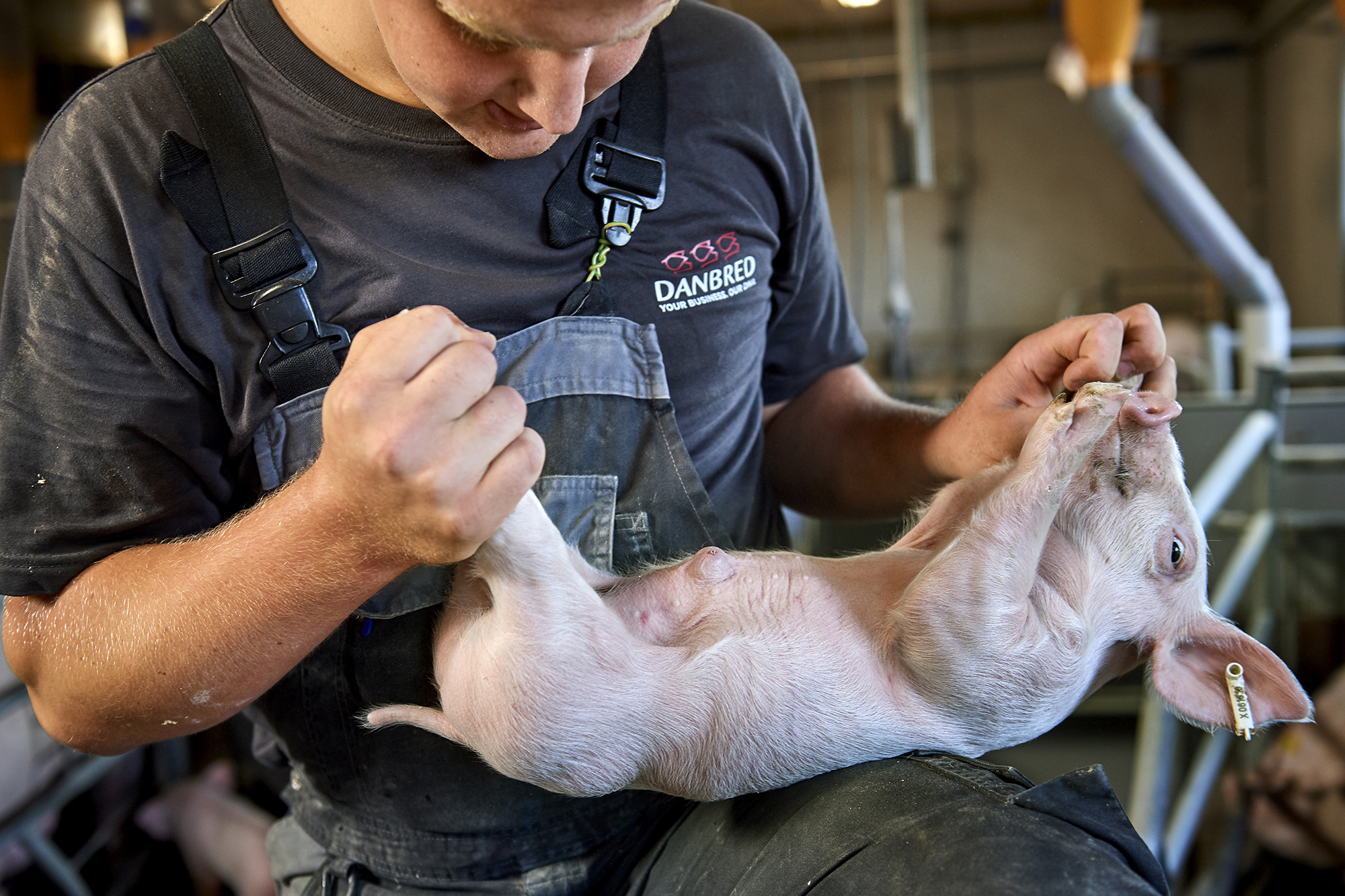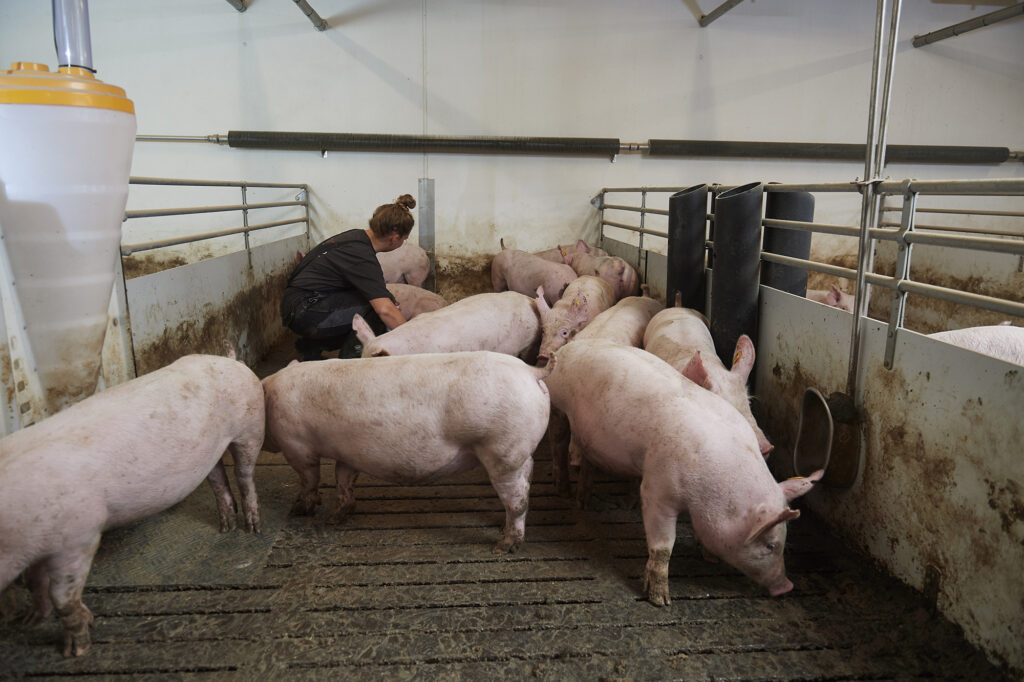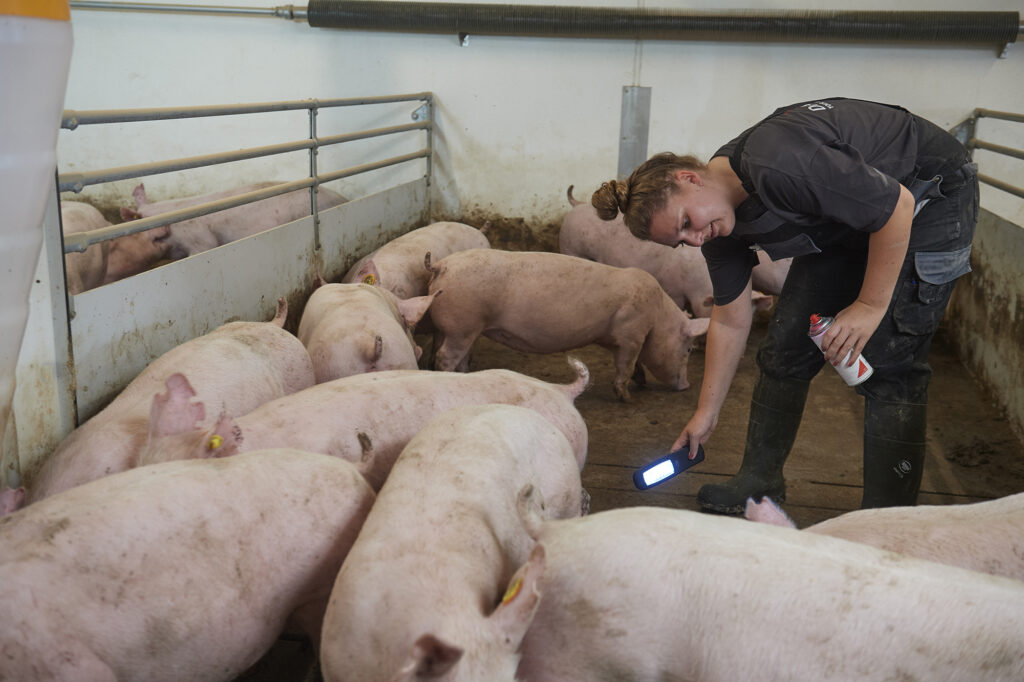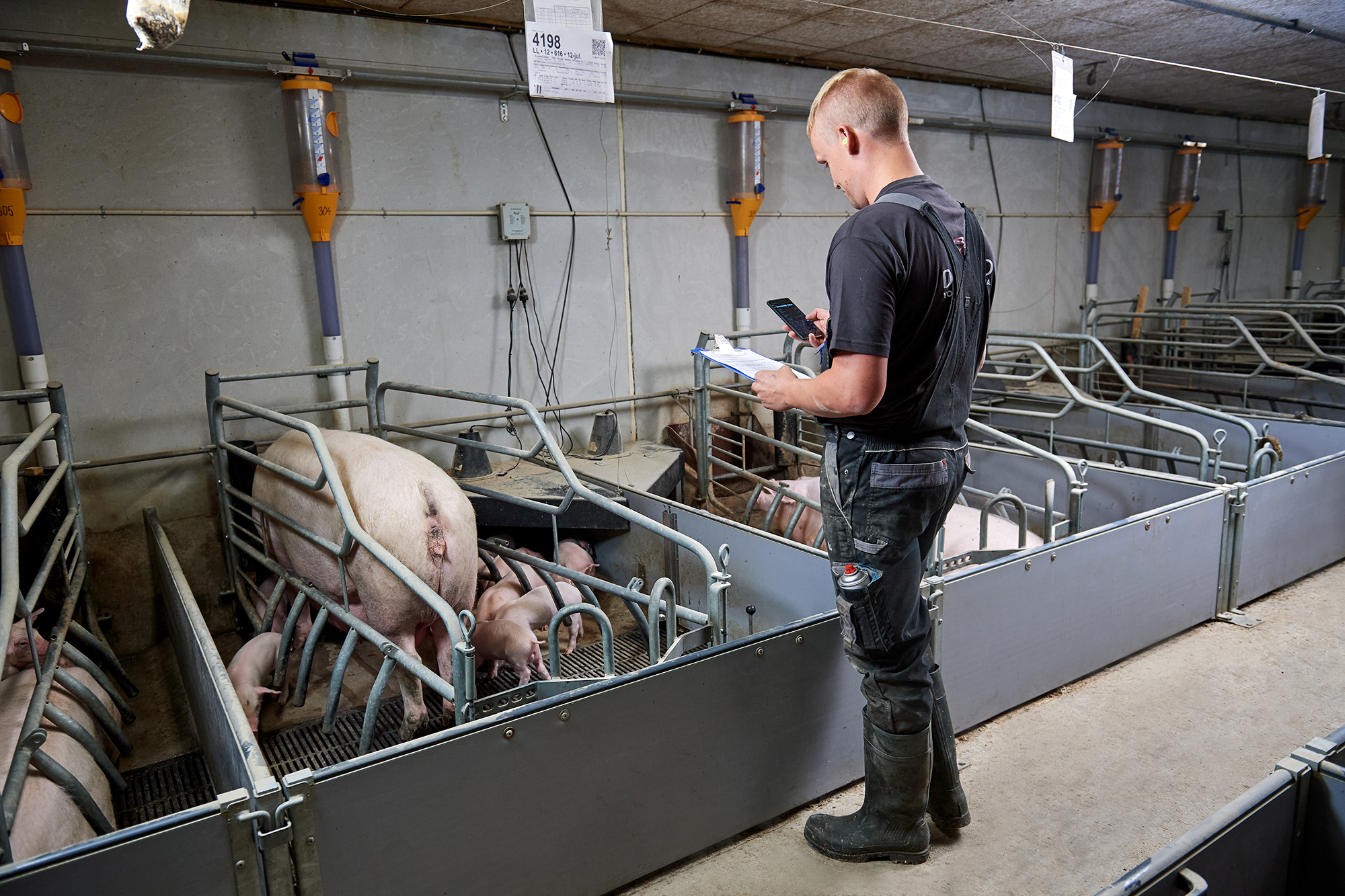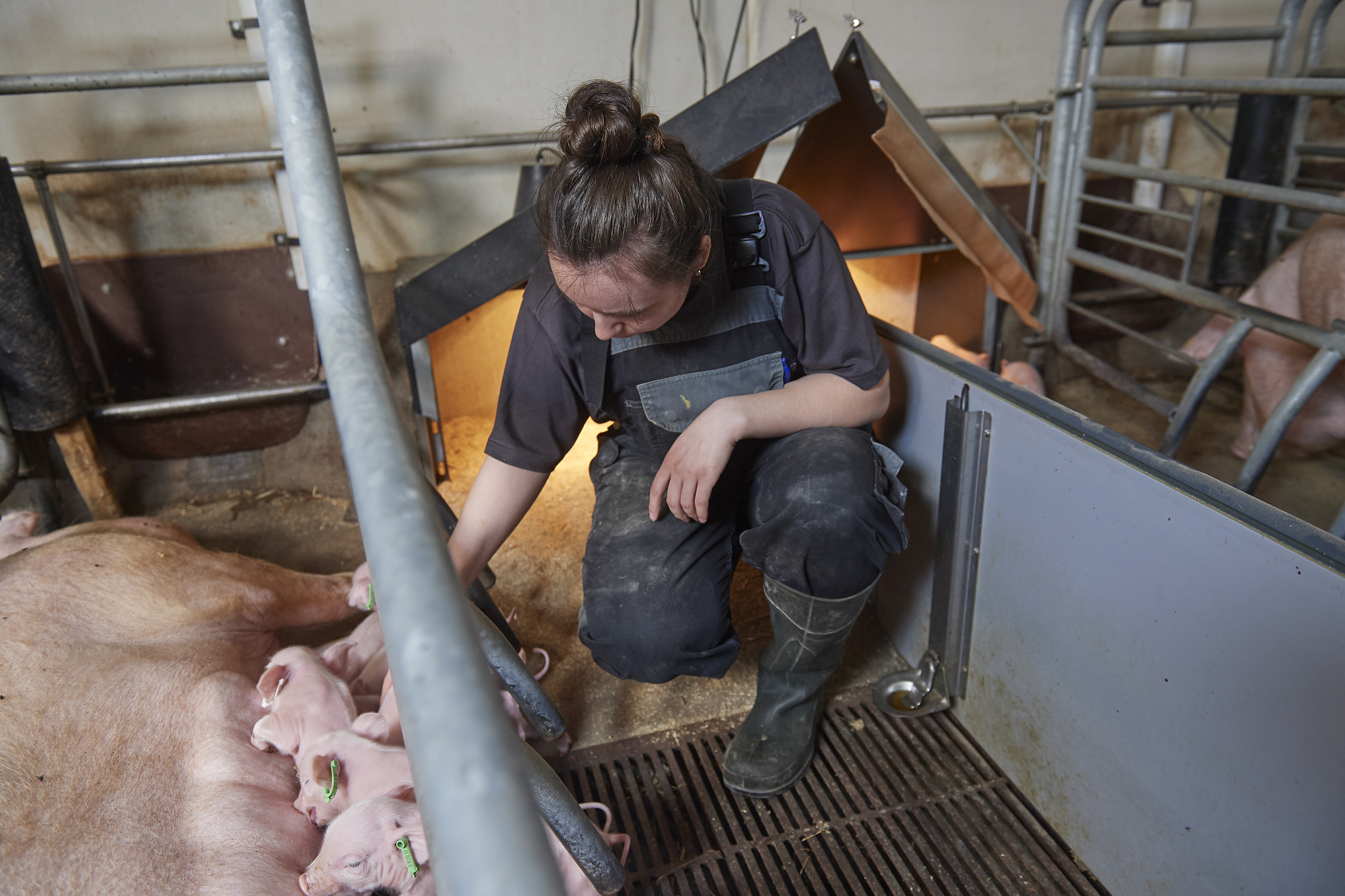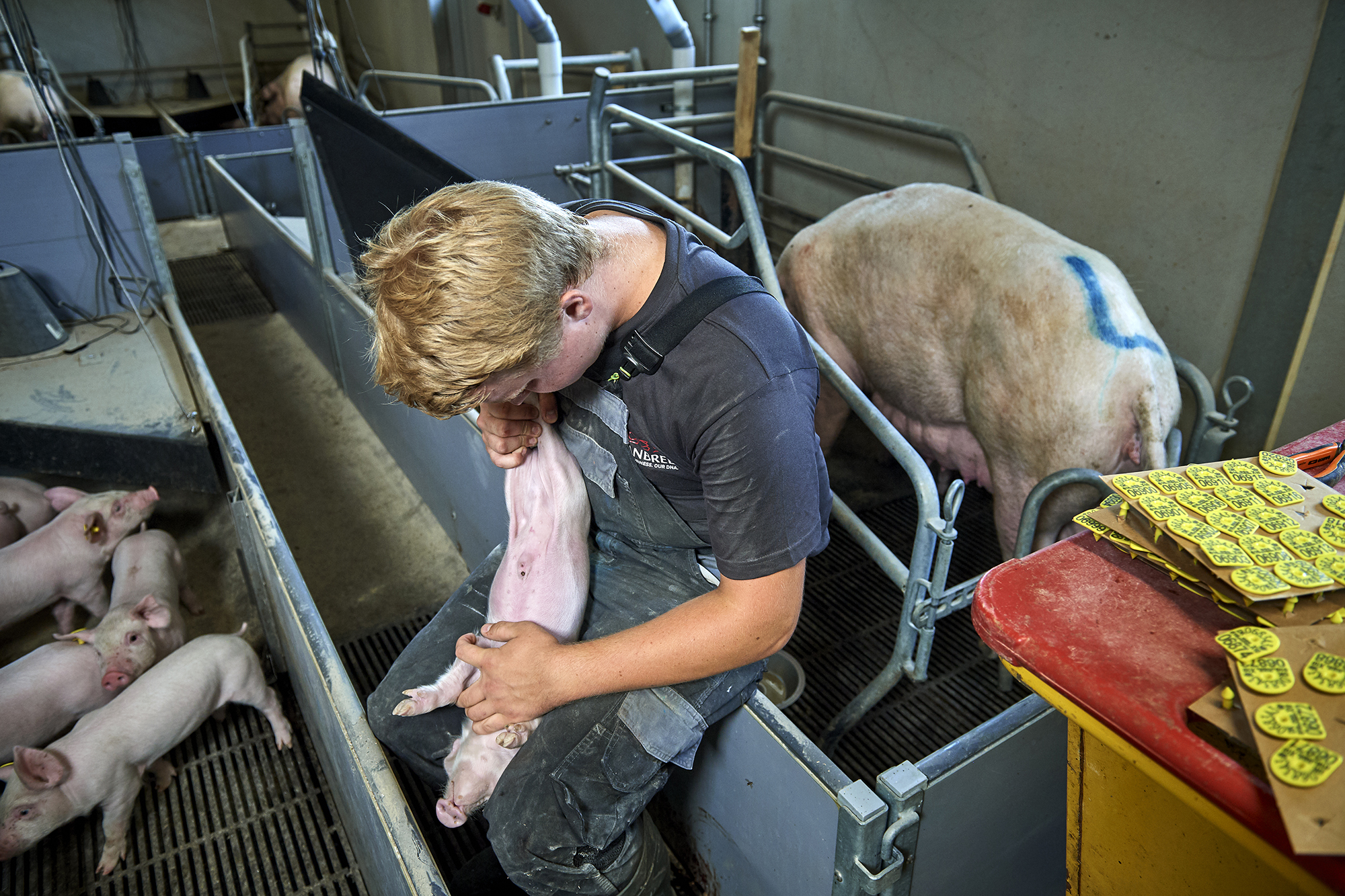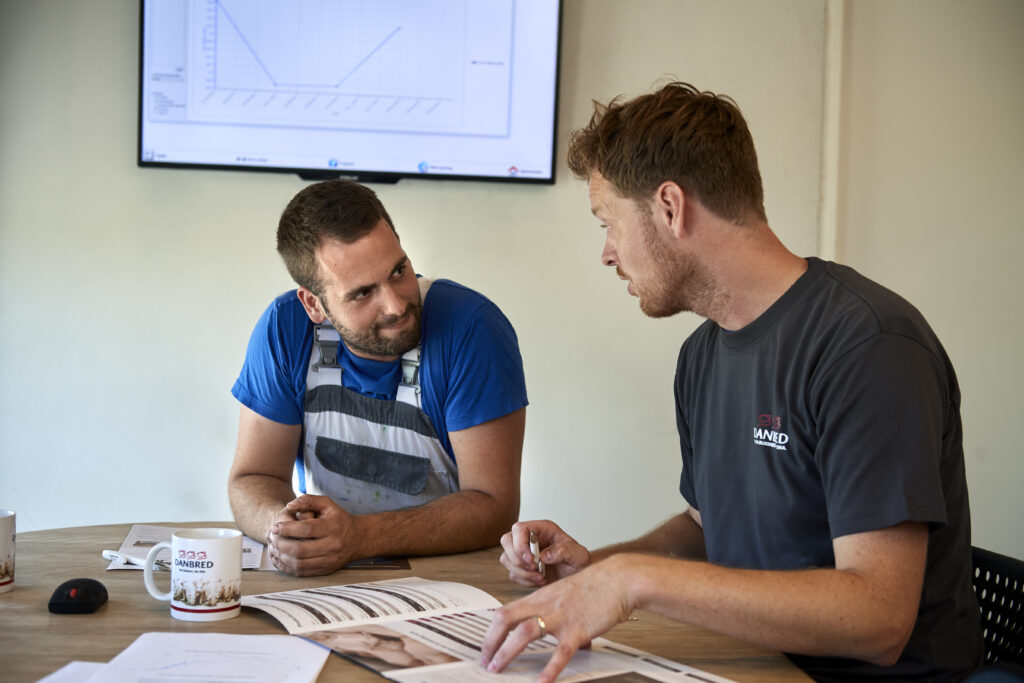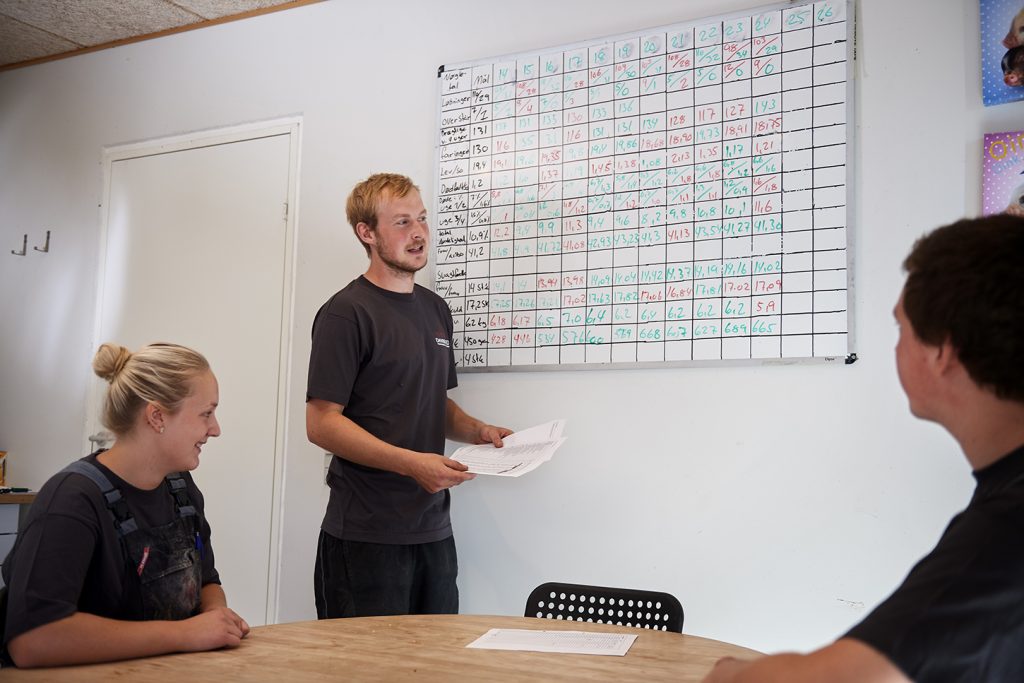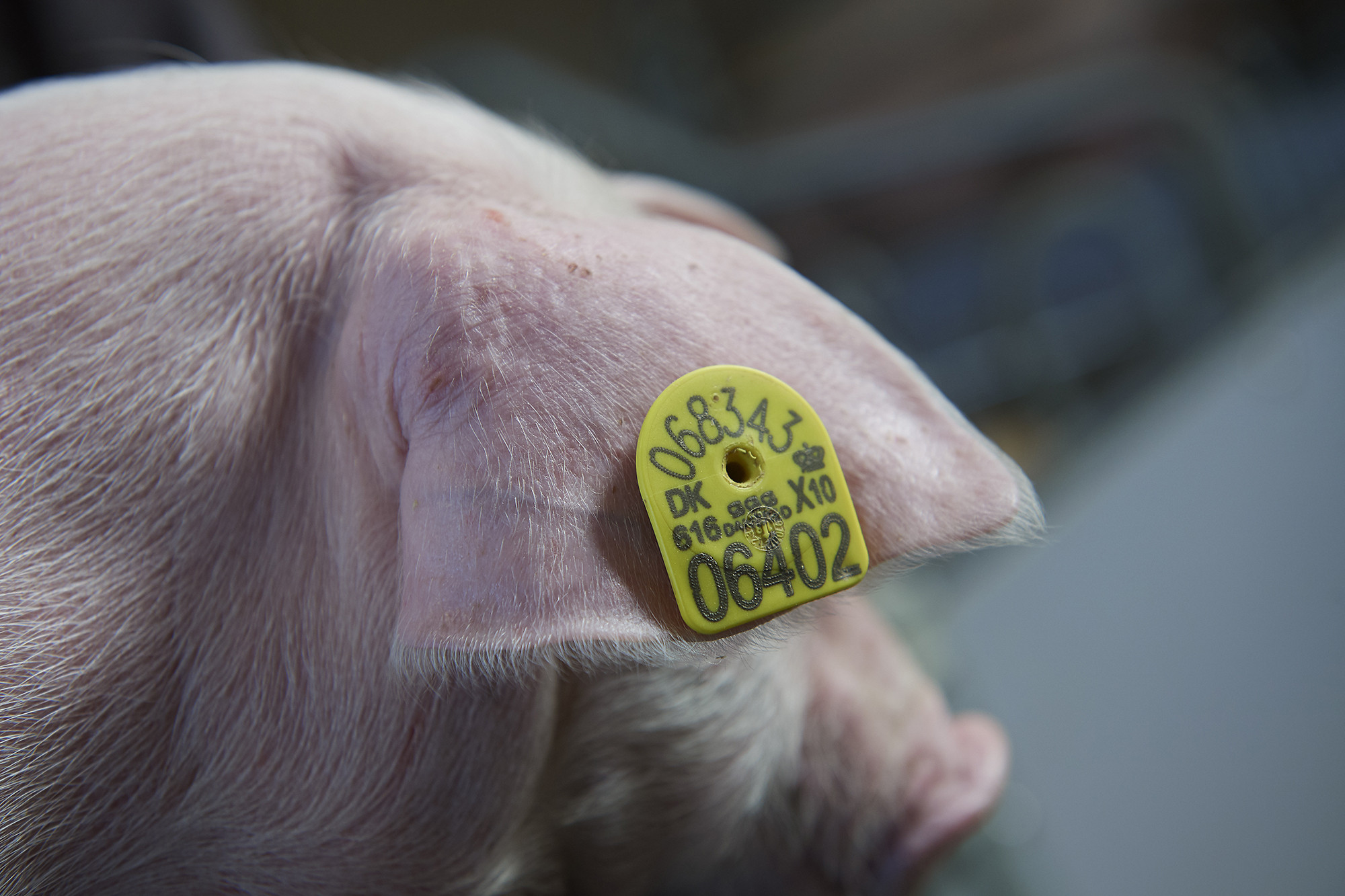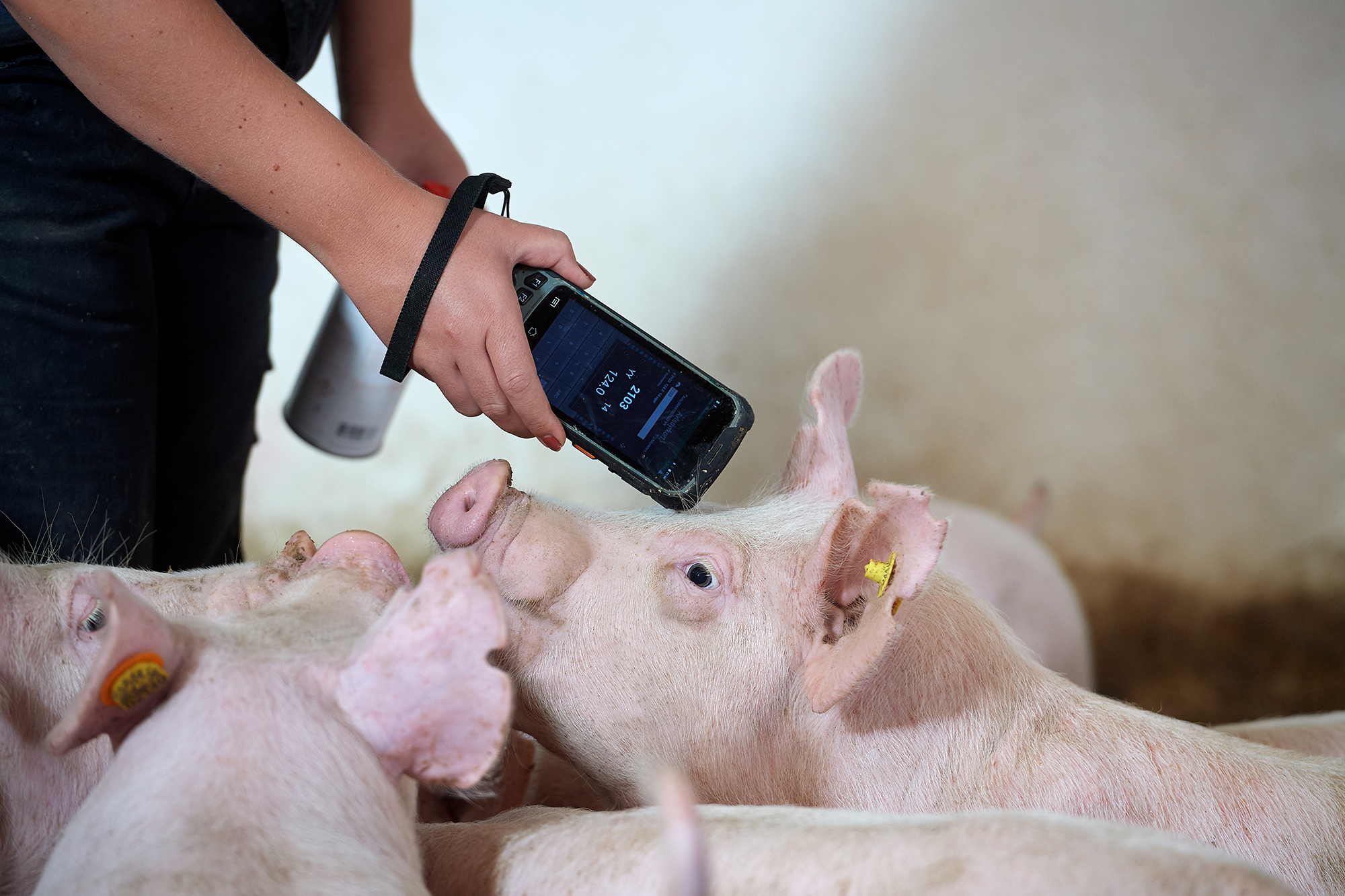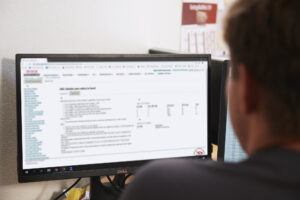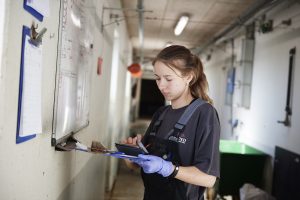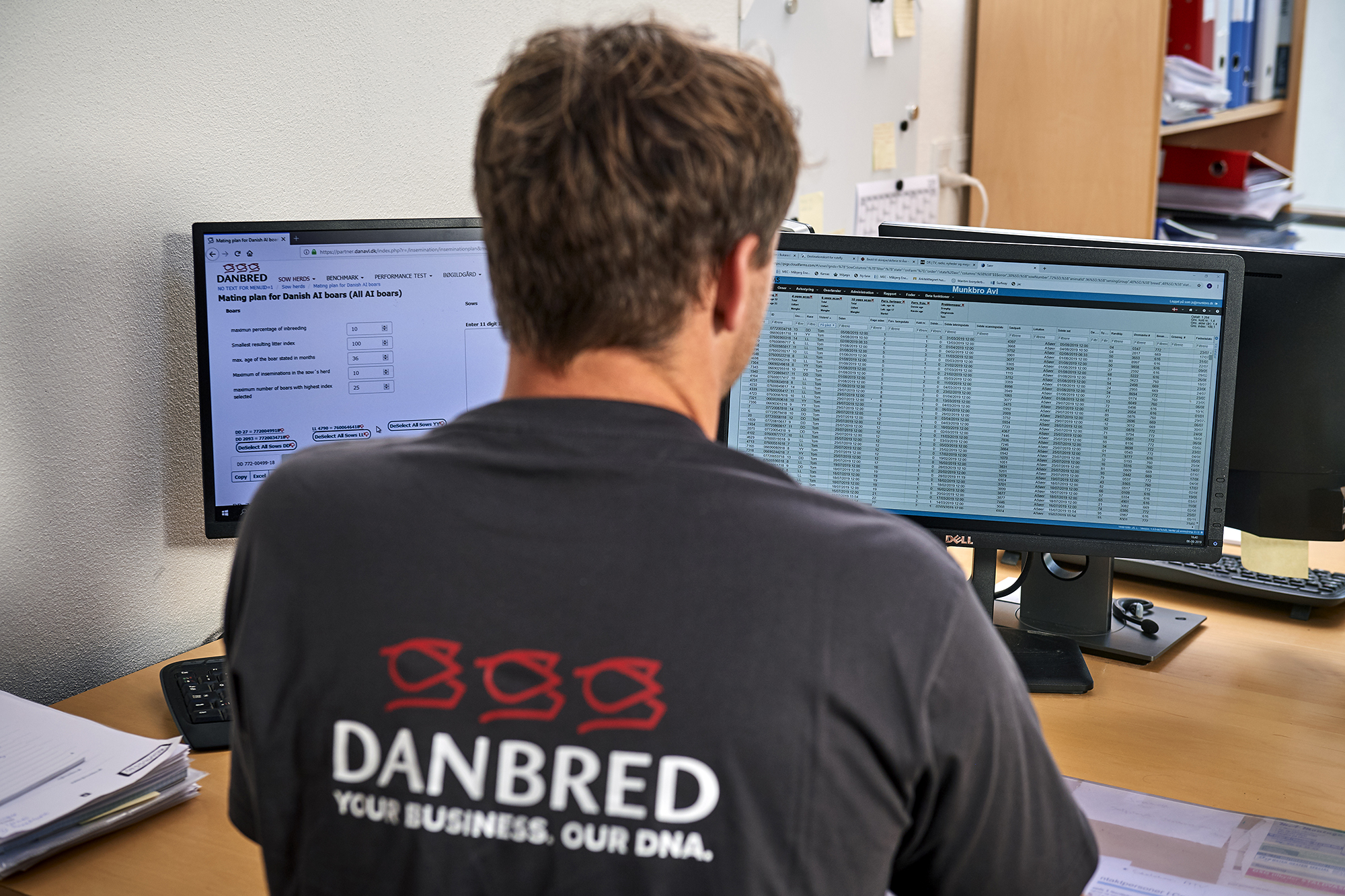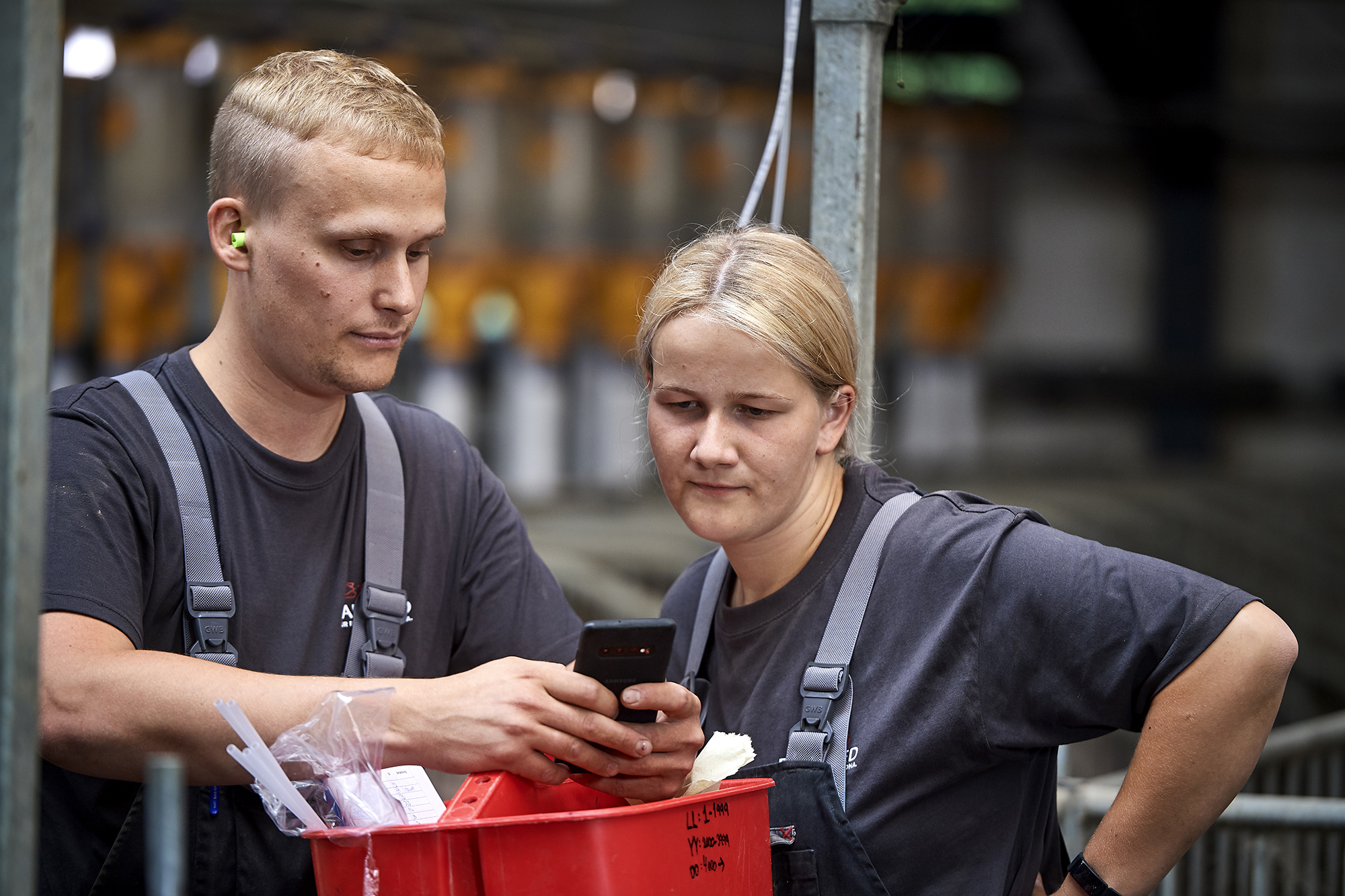Quality assurance
Selection based on quality parameters – ensuring uniform breeding animals
The selection of breeding animals throughout the growth period is vital to ensure the quality and longevity of animals in the breeding system. Even though the main selection criteria is based on the DanBred index, the exterior qualities of the animals should be included. The conformation and the DanBred index work together to ensure the general quality and user experience with DanBred breeding animals.
Selection and exterior – the perfect breeding animal
Selection of breeding animals should already be initiated in the farrowing unit. Animals with distinct flaws or that are in some way not meeting the requirements should be marked, or in most severe cases de-selected at an early stage. This is done to ensure the highest quality in all animals, and that all selection criteria are met and observed throughout the growth period. Furthermore, an ongoing selection from an early stage ensures optimal growth conditions for the remaining breeding animals.
|
|
|
The primary goal in the selection of breeding animals should always be to achieve the highest possible quality in as many breeding animals as possible. In other words, optimising the number of produced breeding animals per sow without compromising quality. This also means that breeding animals should always go through thorough physical assessment during every selection, viewing the animals from the front, the side and from behind. Furthermore, all animals should during selection be observed, not only standing but also in movement, making sure that no possible defects are overlooked.
|
|
|
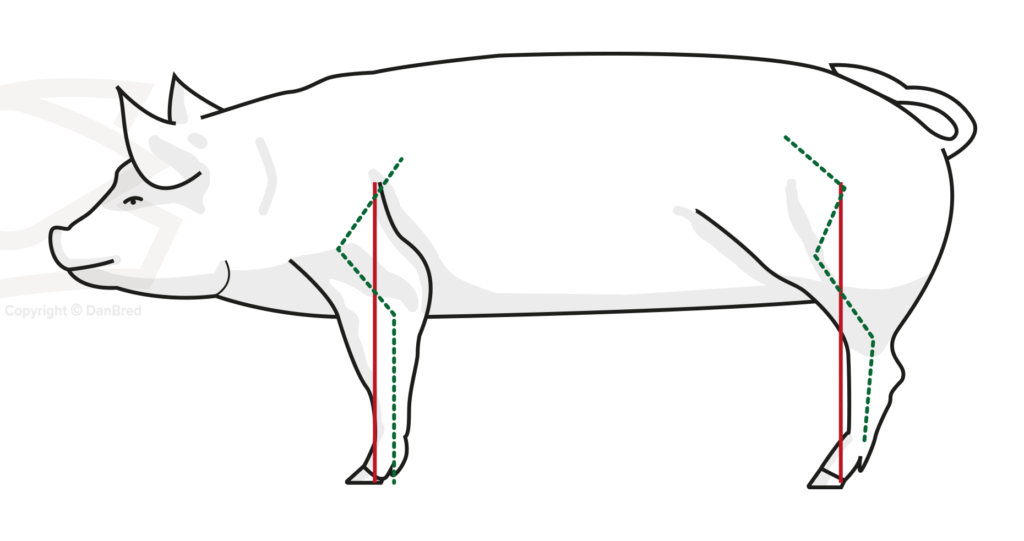
**The perfect breeding animal has four solid corners, straight lines and an unbroken backline.
However, depending on the time of selection there are different parameters to include. The foundation is similar, but some parameters will have a higher impact according to the animal’s age and size – but the highest quality should always be the goal.
See how the DanBred selection team handles selection and quality assurance:
Selection in the farrowing unit
At the end of the nursing period, the first selection of breeding animals begins. All animals should be assessed, making sure that they are all meeting the expected quality of the next generation.
|
|
|
At this point it is important to keep in mind that only the most severe defects are deselected- i.e. defects that will not improve in time. Hence, not all criteria for selection are included at this point, but the following are the most critical:
- Breeding animals that are not thriving should be carefully assessed – if they are not deselected at an early stage, they should be followed closely.
- Injured teats.
- Umbilical hernias/outpouchings at the navel.
|
|
|
- Breeding animals with less than 13-14 functional teats.
- F1 gilts – should have a minimum of 13 functional teats.
- Purebred animals – should have a minimum of 14 functional teats.
- NB! Not in nucleus herds, where they should be included in the performance test.
|
|
|
Furthermore, nucleus and multiplication herds should also consider breed characteristics within a specific breed for purebred animals. If an animal is showing distinct atypical breed characteristics then it should be deselected:
- Distinctive atypical characteristics in general for all breeds, e.g. upright ears on Landrace.
- Black/brown spots in the white breeds (also applies to F1 animals).
- White spots and melanomas in Duroc.
- Animals with tremors (applies to all breeding animals)
Selection in the farrowing unit should only aim to deselect the most obvious and distinct defects. Some defects or exterior flaws can be corrected or outgrown throughout the growth period. Focus on the overall selection criteria and making sure to give the animals the most optimal conditions during the growth period will help to ensure a high number of breeding animals with uncompromised quality.
Selecting high quality animals
From the very beginning, the most distinct defects are deselected, leaving the remaining animals with better growing conditions. Conformation is not considered to a full extent unless the sale of young breeding animals is made, as it might be difficult to make a final assessment of conformation in the youngest animals. Nonetheless, confirmation should always be a factor and be included in the overall assessment.
|
|
|
Breeding animals should always be assessed with the idea of ‘the perfect conformation’ in mind, where the animal’s exterior qualities are considered to have an influence on the quality of future generations. All potential breeding animals should be assessed throughout the growth period in factors that include both conformation and health.
One of the most essential and often overlooked factors is the expected daily gain seen in relation to the age of the animal. The growth rate is affected by a difference within different age groups, pen uniformity, and the expectation of potential customers. It is necessary to continuously monitor the growth curve, making sure that the weight of the animals is consistent with their age. This will make it possible to take action if the curve deviates from expectations.
|
|
|
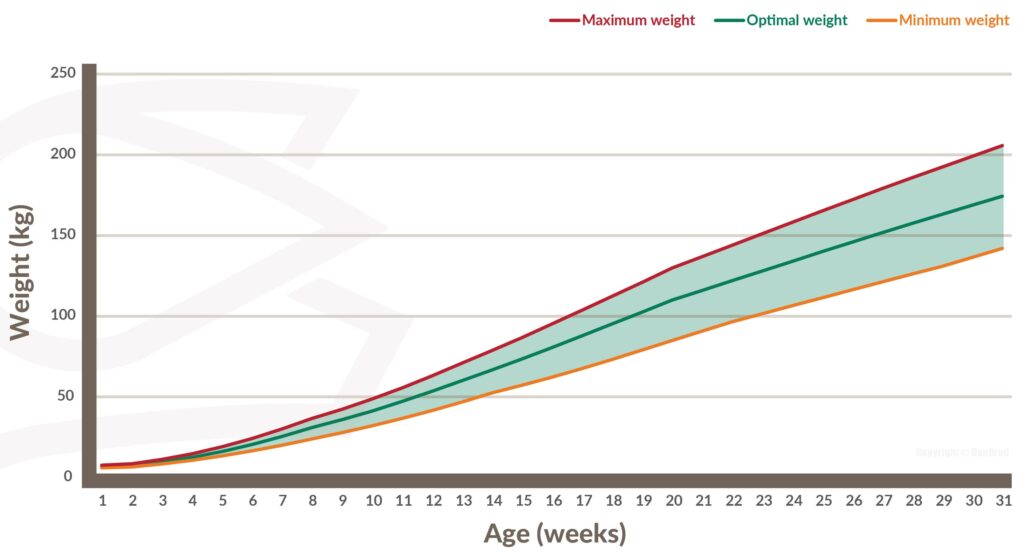 * The breeding animals should follow the optimum curve, but should at minimum be within the shaded area to live up to the required st
* The breeding animals should follow the optimum curve, but should at minimum be within the shaded area to live up to the required st
See full weight table for recommended weight – and minimum weight.
Uniform breeding animals should be synonymous with age in relation to weight. If age and weight do not correspond, there will be inconsistencies with uniformity in the herd. One example could be gilts that are not uniform, resulting in delayed maturation and more difficult first heat detection as the signs are harder to observe. If you find there are inconsistencies without obvious reasons contact relevant experts to make sure a solution is found.
|
|
|
In addition to overall flaws to exterior and uniformity, the focus should also be placed on the animals’ conformation (leg position and strength) – especially in animals above 60 kg, or animals sold at a younger age. Confirmation should be included in the final selection of breeding animals at different levels, depending on the time of selection.
Primary selection criteria in breeding animals below 60 kg:
- Uniformity – weight and age going hand in hand.
- Minimum of 13 – 14 functional teats.
- Distinct undesirable exterior defects – undesired conformation, sway back.
- Umbilical hernias/ outpouchings at the navel.
- Deformed reproductive organs – e.g. hermaphrodites.
- Health in general – tail biting and/or wounds
|
Rejection rate from weaning and up to 60 kg: 4.2 – 10 % Expect 4 – 6 gilts per litter |
Selection depends on the size and age of the animals, as younger animals will possibly grow out of some flaws they might have at an early stage when given the right conditions. For example, when animals are slowly sold out of the pens, the area per animal is increased and the conditions improve for the animals remaining in the pen. In older animals, the preliminary selection should be more in-depth, but of course, consider each animal and flaw individually.
Primary selection criteria in breeding animals above 60 kg:
- Umbilical hernias/outpouchings at the navel.
- Deformed reproductive organs – hermaphrodites.
- Undesirable exterior qualities:
- Sway back.
- Projected shoulders.
- Calluses on both front and rear legs.
- X-shaped and outward rear legs.
- Buckled knees and drumstick movement on front legs.
- Sickle-hooked and outwarded front legs.
- Weak and upright pasterns – bear claws.
|
Rejection from 60 kg – 100 kg: 1. 7 – 4 % Expect 3.7 – 4.6 gilts per litter |
The selection of older, larger animals includes more specific criteria, as there is an increased need to further assess the conformation. A critical point is assessing the lines of the animals, making sure they have four solid corners which will help to increase their longevity. The lines of the animal include the correct angling of both front and rear legs as well as a smooth back line. The basic theory of animal lines is shown below for the leg positioning, whereas shown it is important to assess the conformation from more than one side.
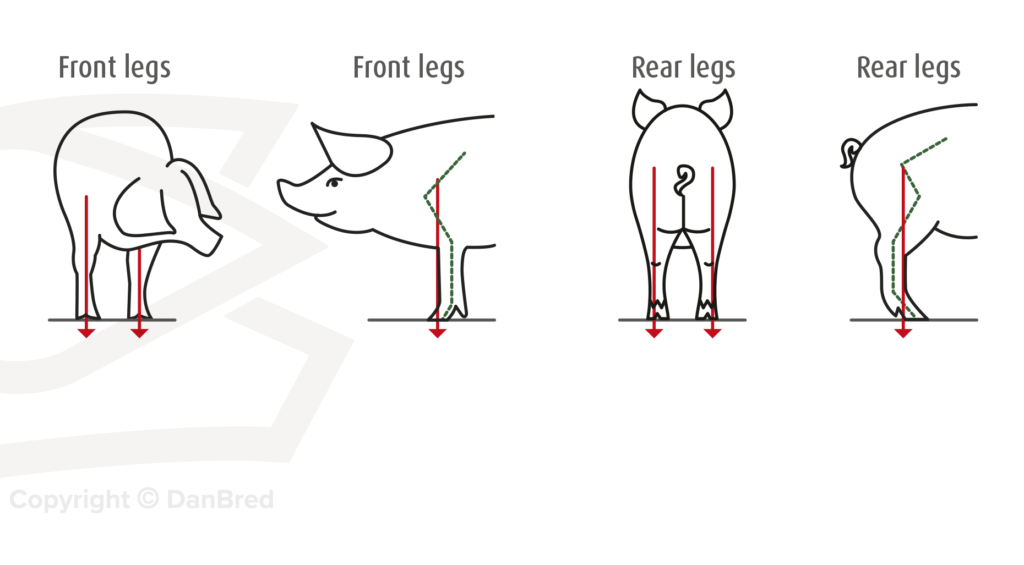
Undesired exterior qualities should be critically assessed, making sure that the leg position and the overall composition of the animal are correct. In this assessment, it is important to know the difference between the desired and undesired conformation. Below different leg positions are shown, in order to both have the desired conformation and undesired qualities assessed together – making it easier to practice in everyday life.
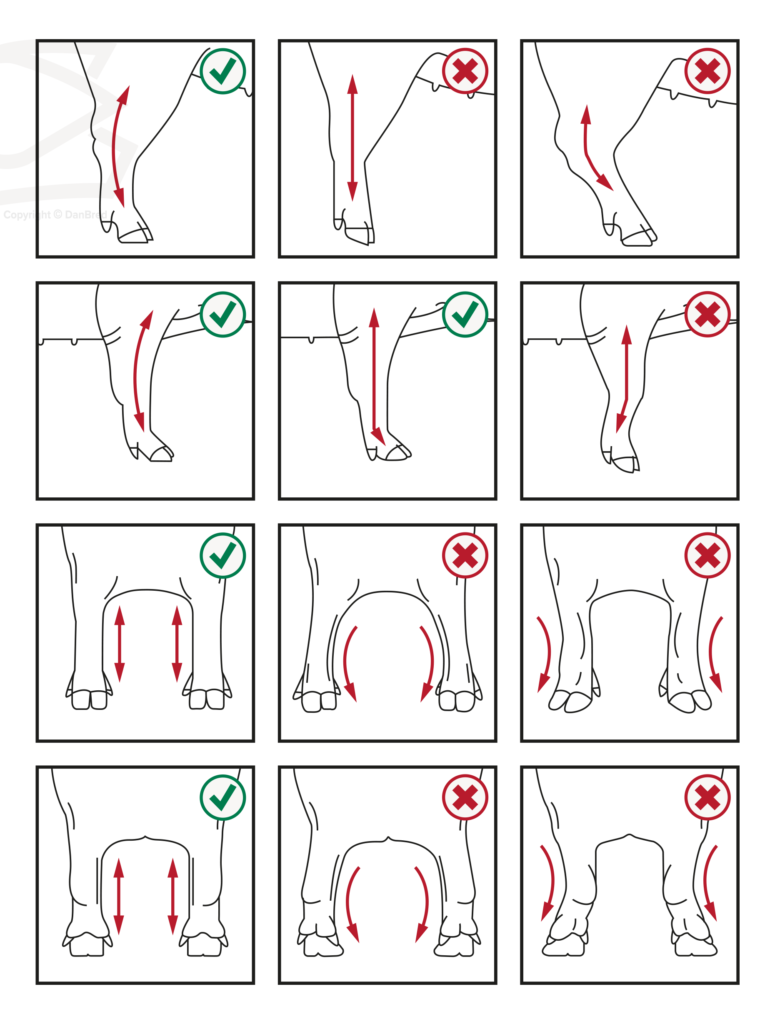
**Differences between desired and undesired conformation in common leg positions. The table should be viewed from left to right, first assessing the front legs in the first three lines, and the last line assessing the rear legs.
Assessing the lines and conformation of the animals should also include the assessment of the claws and their condition. The claws must be uniform in size and without injuries- this can easily be seen when the animals are lying down in the pens. It is possible to make a thorough assessment of the size of both inner and outer claws, as well as check for any changes in the structure of the claws and heels.
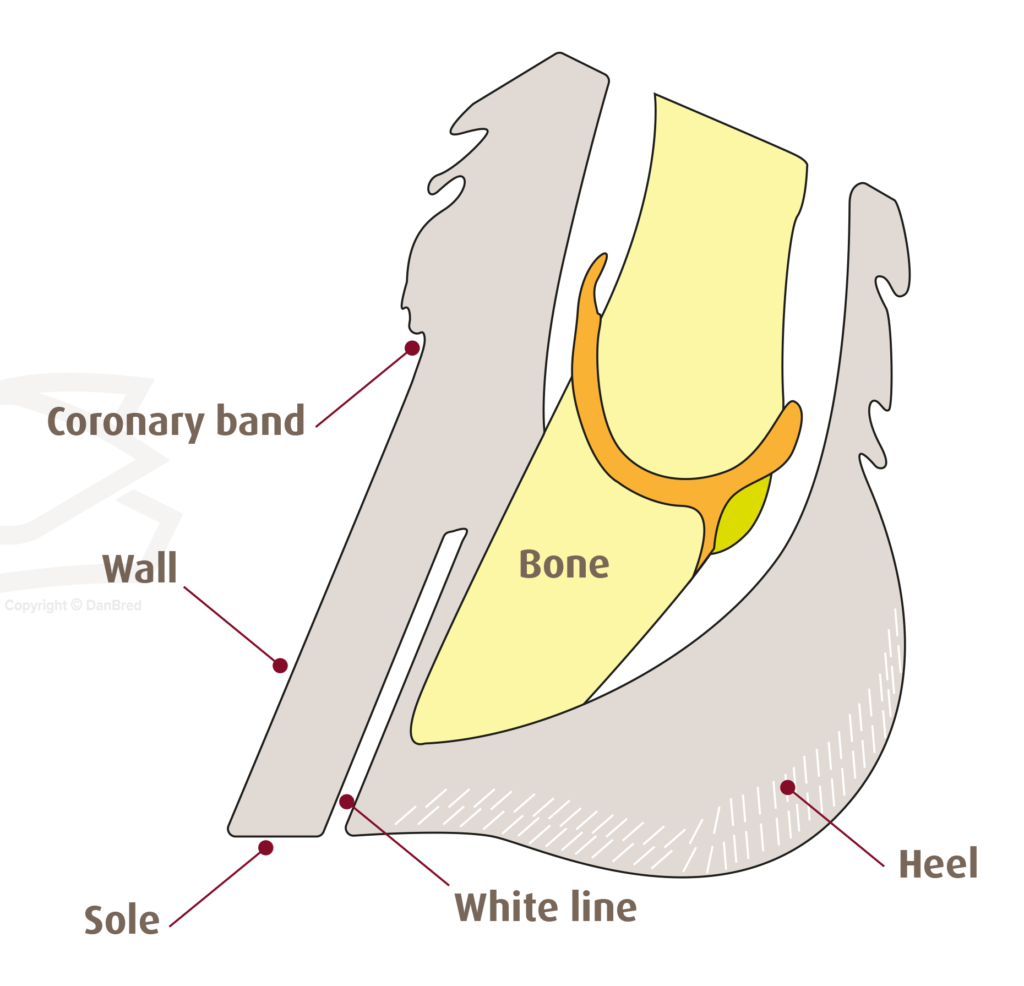
*The claws should be similar in size even though the inner claws will be slightly smaller than the outer claws. But as similar in size as possible, and without distinct changes in the structure of the claws.
Conformation and structure, in general, comprise multiple criteria and are of great importance to the animals’ overall quality. However, this does not makeup quality alone, as the animals should also be assessed in terms of their movement in order to identify quality with the prospect of increased longevity. In other words, conformation and structure should be assessed as a whole, instead of considering all criteria as sub-elements individually – as they will often affect one another. Undesired positioning of the legs will in most cases also affect the free movement of the animal and vice versa. The animals’ overall assessment is thus a combination of several criteria assessed as a hole, where the animal is evaluated from all angles (front, rear, side, and underneath), standing and moving to make a full assessment of quality.
Selection of breeding animals should be considered an ongoing process throughout the growth period, making sure that the final selection is made when entering the animals into production or selling them to a customer. Keep slaughter weight in mind for selections made after 100 kg, so that unnecessary penalties can be avoided if the animal is not going to be selected for breeding.
Traceability
When talking about selecting animals with good conformation and health parameters, it is vital to also discuss quality assurance. One of the most important tools we have in this area is the individual identification of animals. This ensures optimal selection, as an individual distinction can be made between animals, giving further assurance of quality as it is a specified product.
|
|
|
All gilts (and boars in Nucleus and Multiplication herds) are tagged with an individual number immediately after farrowing. This is their DanBred ID-number, and it must follow them until they are culled. It is crucial to keep control of the animals within the pens, making sure that there are efficient procedures set in place for if/when an animal loses an ear tag – making sure traceability is maintained.
Pen cards
Despite the fact that all breeding animals are tagged at farrowing and have an individual ID-number, it is still possible that the ear tag can get lost during the growth period. In these cases, it is essential that the animal can still be identified in order to validate the pedigree of the animal, making sure traceability is maintained and that the animals can still be classified as high-value, quality breeding animals.
If an accident happens and an ear tag is lost, there are several different methods to trace back the steps and find out the correct ID-number. One way is to use the pen card in combination with the ID-number and possibly the ear notch. From a process of elimination, the animal can be traced back without an ear tag by eliminating it from the remaining animals in the pen. The ear notch can act as a second measurement in cases where more tags are lost.
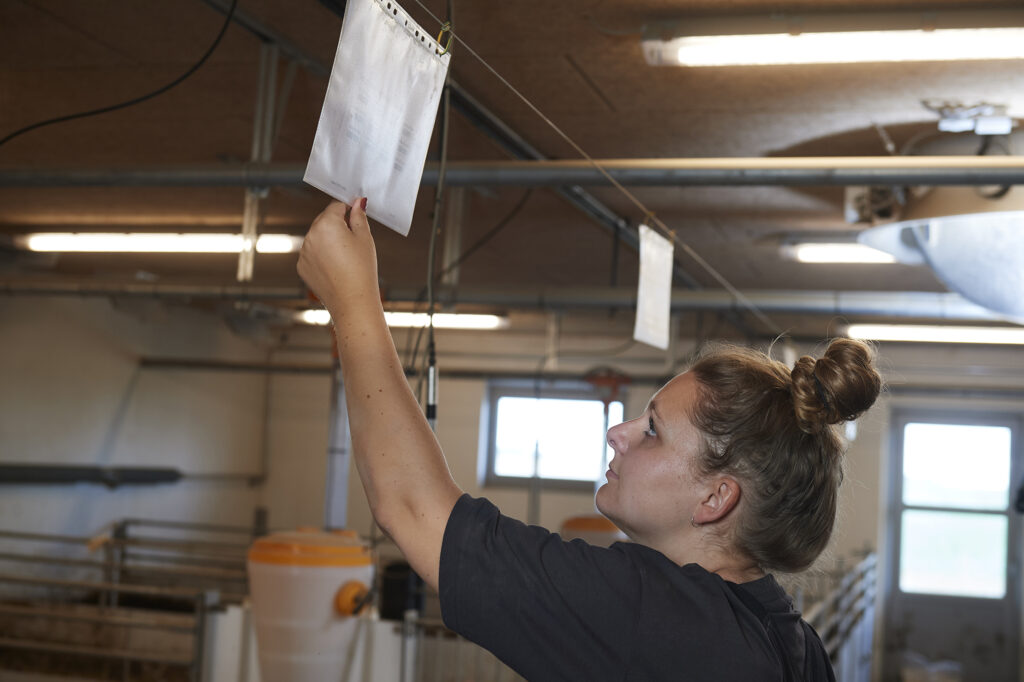 |
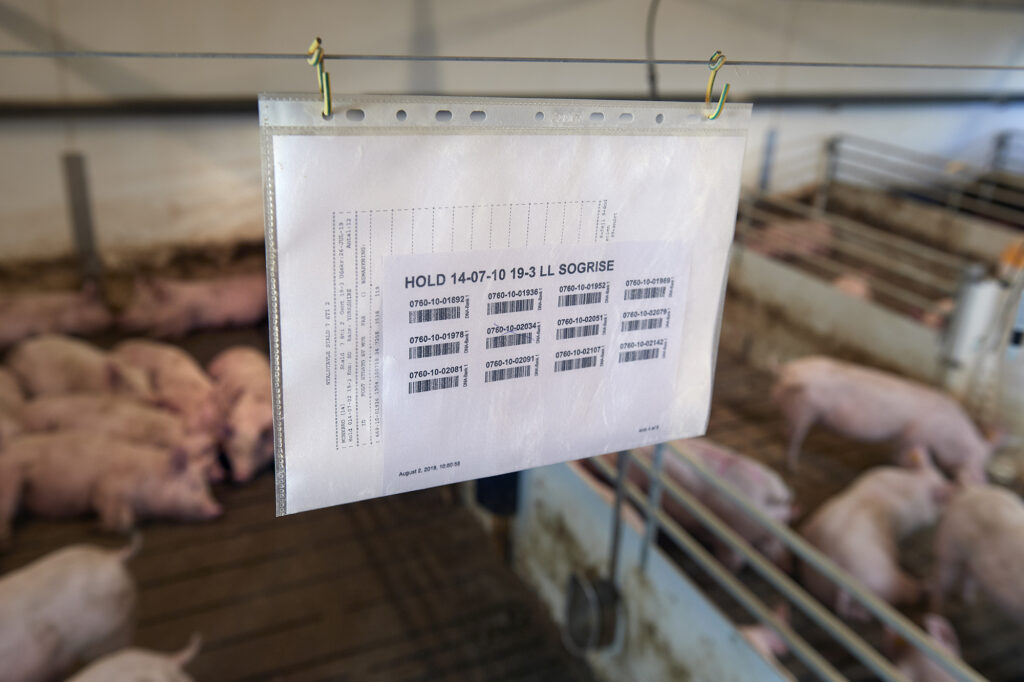 |
This is also why it is important to always have updated pen cards in the different units, and that they are actively used in the everyday routines. Pen cards should be updated every time an animal is relocated, or at any time an animal is taken out of the pen – making sure the pen cards always have the updated information of all animals in the pen. Doing this, and taking the time to manage it is time well spent, especially when ear tags are lost – otherwise, there is no possibility to trace back the ID-number and the animal will not be qualified as a breeding animal moving forward.
If/when an ear tag is lost, it should always be replaced with a replacement tag. Replacement tags should be a replicate of the previous tag, meaning that in Nucleus and Multiplication herds they should also be approved electronic DanBred tags. Replacement tags can be ordered directly at the DanBred Partner Site for Nucleus and Multiplication herds. Until the tag arrives, the animal should be visibly marked with a temporary handwritten tag that can be placed, or simply by using a marking spray, writing the serial number of the ID-number.
|
|
|
EID – Electronic ear tags
Traceability is further enhanced by using electronic ear tags, which will furthermore ease selection and minimise errors within the herds. When ordering ear tags through DanBred, the electronic ID-number (EID/EPC) is paired with each breeding animal’s DanBred ID-number. The ear tags can then be scanned at the herd, where the pedigree can be viewed directly in the pen. The index is also shown directly on the monitor of the scanner, making selection easy and you are able to assess both index and conformation at one time.
Electronic ear tags will increase data security, as the risk of errors from misread (dirty) ear tags is minimised. This applies both for stock purposes, making sure the correct animals are taken out of production but also when reading tags for registration in the herd.
|
|
|
The ear tags can be read directly at pen level, where the scanner can be in direct connection to the herds’ chosen software program. This makes it possible to register events immediately, with fewer errors and diminished workload as registrations should only be made once.
Integrating with DanBreds databank
Traceability and data quality within the herd requires the animals to be created in DanBreds databank, where all information can be retrieved for each individual animal. This is essential in the quality assessment and assurance, as is a vital part of delivering animals with a fully documented and approved breeding pedigree.
A number of different software solutions are running a full integration with DanBreds databank, enabling a direct transfer of data from the herd. This is essential to ensure data quality and also enable easily handled workflows of breeding registrations.
|
|
|
The following management programs offer full integration with DanBreds databank:
- AgriSyst – PigExpert
- CloudFarms
- AgroVision – PigVision
The following management programs offer a partial integration with DanBreds databank:
- Pig’UP from ISAGRI
- Pig Control from IFR
- AgroVision has a series of software solutions with partial DanBred databank integration
Further to the above list, several other management programs offer a partial DanBred integration. The specific provider will be able to answer how the program is integrated with DanBred, and to what extent. If your current management program is not listed, we recommend contacting the provider and discussing the possibilities of setting up the integration. The specific requirements for coding the integration can be supplied by DanBreds Technical Service Centre.
With a fully integrated solution, the herd can register all relevant events from production as well as analyse the herd breeding data, with information retrieved directly from DanBreds databank. This is the foundation of adequate traceability and will make it possible to search all animals using their unique DanBred ID-number.
To maintain adequate traceability, it is important to have self-monitoring where the herds’ data is compared from the management program to what is actually entered in the databank. This means that a checklist should be used, to ensure that data is registered correctly and in a timely manner in the databank.
The checklist for self-monitoring of data should include:
- Check the ID-number – the ID-number is present and created /valid in the databank, remember that the ID-number always consists of 11 digits.
- The ID-number consists of; a herd number – a major counter–serial number. Respectively 4 – 2 – 5 digits.
- Check indexes in the software program – if possible, check against the date of the last update. It should update after every index calculation so that you are always working with the newest data.
- Check the herd number – DanBreds herd number must be connected in the software program – this determines whether data is sent on each animal in most software programs. It is important to check both settings and at an animal level.
The checklist should ensure that correct, and adequate integration is ensured, meaning that all breeding animals are created both in the software program and in the database. Correct integration is matching information in the herds’ software program and the databank, and timely registrations – always being able to compare the numbers between datasets and ensuring data in a timely manner for the index calculation.
It is important to regularly check the index. If the index is not retrieved in the software program, it may be due to a lacking integration (data exchange) – meaning that there is an error in need of action, in order to maintain traceability and data quality. When going over the checklist, it is essential that any errors or miscommunications are dealt with. The first step is locating the source of the problem. If the gilts are missing indexes for instance – are the mother and father known in the databank? If yes, has the farrowing in which they were born in been registered in the databank? Or has the ID-number never been created and sent to the databank? The important thing to remember is that just because data is registered in the management program, it is not necessarily registered in the database. This is why it is important to make sure to check both.
Furthermore, there should always be a focus on controlling error lists on the DanBredPartner Site, where the most recently uploaded data will be available. Some management programs are able to display the errors in the same quality as the website, but regardless it is a good idea to keep an eye on it. In all cases, it is essential to check errors and use both the databank and the management program to solve the errors – this will make it easier to see the differences, and discover the source of the error.
It requires some extra time and management, keeping data up to date and making sure that it is correct at all times. However it pays off, as this is an essential parameter in the production of quality breeding animals – if we cannot trust our data, how can we be sure of the actual quality of the animal?


